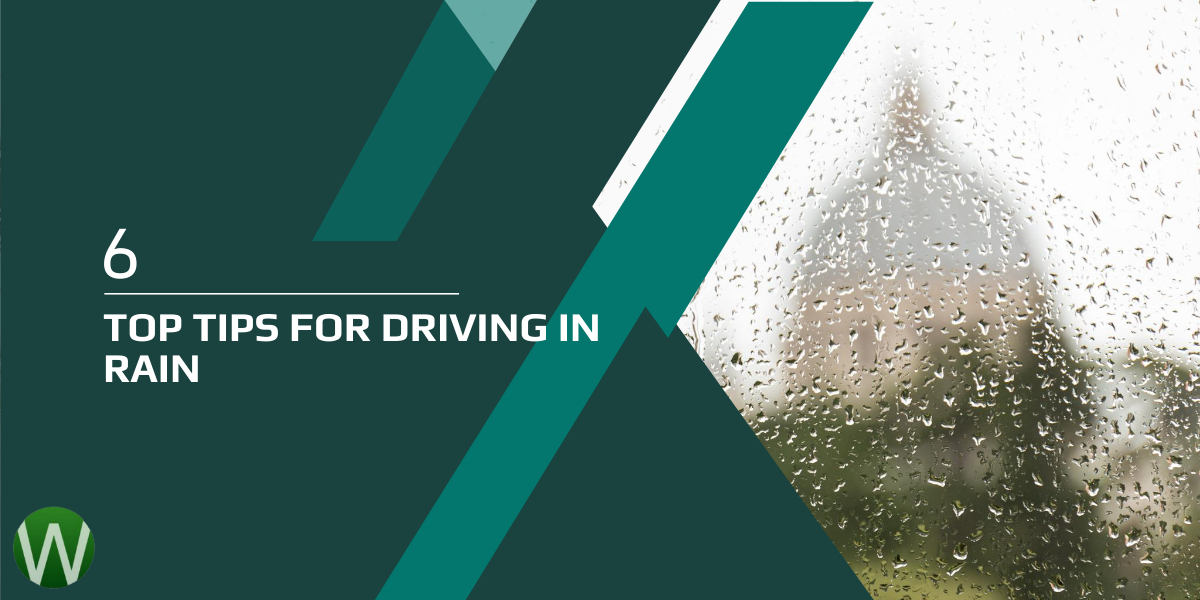As winter rolls around once again, we’re more likely to face inclement weather on the roads. Rain doesn’t even have to be torrential in order to have an impact on our driving – even slight precipitation should be enough for drivers to understand that extra care and attention is required.
In fact, the police recently released a statement reminding road users to take extra care while travelling in wet weather, after a particularly nasty accident on the M62 in heavy rain demonstrated the need to do so.
To stay safe on the road, here are our top six tips for driving carefully in the rain:
1) Think about stopping distances
When it rains, stopping distances are extended. It takes 12 metres to come to a stop while travelling at 20mph in perfect conditions – a figure which doubles when rain is present on the roads.
If you’re travelling at 70mph on a dual carriageway, this means you’ll need to leave a safe distance of 200 metres between your vehicle and the one in front.
This will provide you with enough time to brake during an emergency. You may find it beneficial to check out the official DVSA guidelines on safe stopping distances if you are unsure.
2) Check your tyre treads
While basic vehicle maintenance is something every driver should be regularly keeping on top of, you should pay particular attention to your tyre treads during the winter months. You should also ensure that your tyres are correctly inflated (see the owner’s manual of your vehicle for further details).
Despite tyre tread depths being a legal requirement, a staggering 65% of UK drivers are unaware that their tyres should have at least 1.6mm of tread across their central three-quarters.
Over 25% of drivers have failed to check their tyres in the past quarter of a year, and a ridiculous 13% knowingly drive around with bald tyres. Don’t put yourself at risk!
3) Keep an eye out for water
Drivers should always be aware of the presence of water on our roads. If you spray a cyclist or pedestrian as a result of driving through a puddle, you could face a fine of up to £5,000. While this is unpleasant, it’s not quite as dangerous as aquaplaning.
Aquaplaning is when all tyres lose traction while travelling over water, which can lead to a total loss of vehicle control. To avoid this, slow down while travelling over water, and avoid driving through standing or moving water where possible.
4) Use some common sense
Before embarking on a journey in the rain, do some quick safety checks. Ensure your wipers are working, check your dimmers, and be prepared to postpone your travels if the rain becomes too heavy.
5) Get advice from a professional
Why not request a lesson with a driving instructor when it’s forecast to rain? You’ll pick up guidance and advice on staying safe, and you’ll feel more at ease having an expert talking you through the dos and don’ts of driving in inclement weather.
6) Keep your windscreen clean and tidy
You might think a combination of rainwater and windscreen wipers will keep your windscreen clear – but think again. When the rain stops, dirt can get thrown onto your windscreen from cars travelling in front of you/overtaking you, and this could obscure your view.
If you’ve been keeping an eye on your screen washer levels, you should be fine. However, if you haven’t you could be putting yourself at risk.
Furthermore, having a dirty windscreen, side windows and/or back windows is an offence which could land you with up to nine points on your licence. Better safe than sorry in our view!







